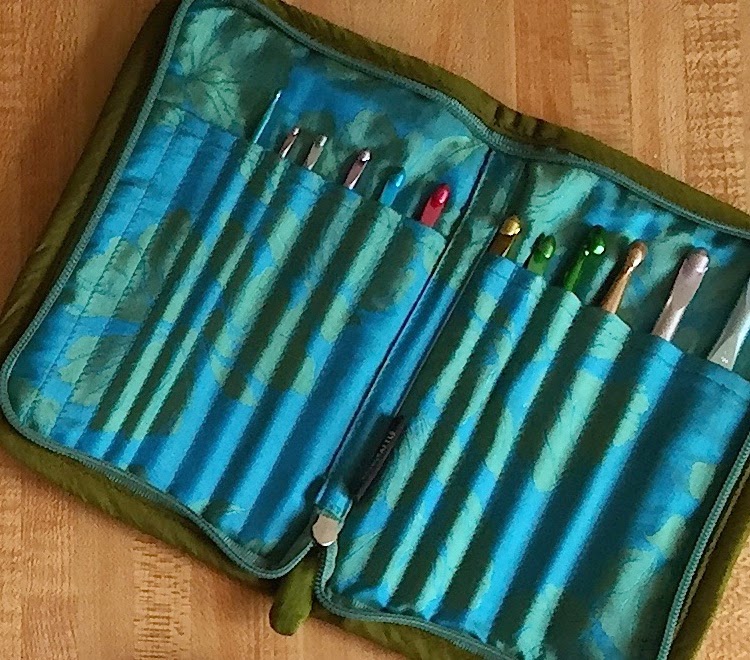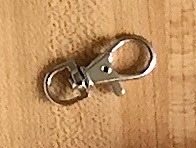A crochet enthusiast could likely spend all day looking at pretty yarns and become all twitterpated. However, it's important to come back down to earth once in a while and be practical. Today I'd like to go over what's in my tool kit as an avid and professional crocheter.
The first item is a hook case. I have a few that I switch between because there are just too many cute hook cases out there! This blue and green case was given to me by my sorority sister, Suzanne. A case keeps your hooks organized and clean. It also protects special hooks from getting scratched or otherwise damaged.
Next up we have some measuring tools. I use the tape measure for measuring finished objects. It's also useful for measuring things that aren't flat, like the inside of a hat brim or someone's head. I use both the ruler and the sheep as gauge checkers. They help ensure that I my projects will be sized as intended.
Every crocheter needs a good, sharp pair of scissors. Try your very best not to use your yarn scissors on anything but yarn. This will help them to stay sharp and free from contaminants that could get on your projects.
A yarn needle, or preferably a set of yarn needles in different sizes, is essential for weaving in ends and adding embellishments to your projects. Some people like the style with a bend at the tip. I prefer classic yarn needles. You can help yourself keep track of your yarn needles by keeping them in your hook case.
Here's my little tomato of pins. I am a very knotty crocheter indeed... I use pins with colored heads. Ideally you should use pins with flat heads or no color. Why? In addition to being used to keep things in place while sewing crochet pieces together or for sewing on appliques, pins are used in blocking. Blocking entails using water (and often heat as well). If you use heat and water with colored pins the color could come off on your project. So in this case... do as I say and not as I do :p
If you can swing it, it's a good idea to have a decent camera for taking pictures of your crochet items. After all, items are often given away as gifts and you'll want to keep a little piece of your hard work with you! Cameras are also good for taking pictures that end up on Ravelry or social media. It's not necessary to have a giant SLR fancy shmancy camera (though how cool if you do!). A simple camera or even a smartphone camera will do.
A pen is a simple but essential crochet tool. You may want to cross off rows as you complete them if you've printed your pattern. You may want to make notes on a yarn label. Make sure you have a pen nearby. A small notebook is a good idea, too. I have several notebooks and notepads that serve different functions in my designing.
Do you want to start a new project with a partial skein of yarn but you have no idea how much yarn is left? A small kitchen scale can help you figure it out. Make sure you get one that lists ounces. You can get your yardage from the ounces by doing a conversion according to the information on the label. Just plug and chug with x / yardage of the full skein = oz you have left / oz in the full skein. I also use my scale to figure out how many yards are required for one of my patterns.
Here's my beloved yarn winder and swift. If you're buying yarn in hanks, which is how most non-craft yarn is sold, you'll save time spent in the store or time spent at home hand-winding yarn if you invest in a set like this. Winding yarn is
so satisfying.
Finally, we have stitch markers. These can help you keep count as well as hold your spot at the end of continuous rounds. Make sure they are removable. I'm a little odd when it comes to stitch markers. I actually like to use these giant lobster clasps. Then I can even attach a little note to them if I want to help myself remember something!
Other desirable tools that aren't pictured include a blocking board, a row counter, and compression gloves (if you have any pain when you crochet).
Can you think of any tools I may have missed?






















































